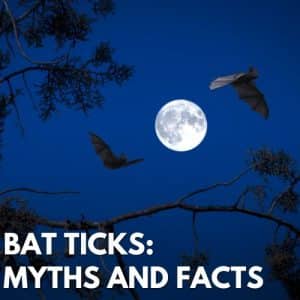
The tick population in Connecticut is rising due to certain climatic factors like shorter and warmer winters and longer and wet springs and summer. This makes it favorable for the tick population to thrive and expand their population in Connecticut. Connecticut has a large population of disease-causing ticks – Blacklegged ticks and American dog ticks. But climatic factors have led to the emergence of new species in the state, including Lone star ticks, Asian longhorned ticks, etc. This blog will provide you with information regarding the ticks in Connecticut.
Types of Ticks in Connecticut
Blacklegged Ticks:
The blacklegged ticks are also known as the deer tick. They are one of the most dangerous ticks as they tend to be vectors of Anaplasmosis and Lyme disease. The blacklegged ticks can carry about seven disease-causing pathogens. The adult deer ticks are reddish-brown and have white greyish markings. These ticks can be found in uncut grass regions, nests and dens.
Humans are incidental hosts for all types of ticks. The survival of ticks is not dependent on human hosts. The blacklegged ticks acquire the diseases while feeding on hosts. Some of the illness-causing pathogens they may carry include Powassan Virus and Babesiosis virus.
American Dog Tick:
These ticks are well-known transmitters of the pathogens which cause Rocky Mountain Spotted fever and Tularemia. The males and females are sexually dimorphic. That is, males are different from females and smaller than their female counterparts. They tend to prefer dogs as hosts. This feature makes them dangerous for humans because pets-owners are likely to encounter tick bites as pet animals may carry them. If one lives in tick-infested regions, looking at pets for the American Dog Ticks is significant.
Lone Star Ticks:
These ticks rarely thrive in Connecticut. But due to recent climatic factors, there has been an increase in the population of lone star ticks. Females have white star-like dots on their backs. They tend to bite humans and other animals. These ticks are assumed to be the reason for the STARI, a rash that causes other febrile symptoms.
This is quite different from Lyme disease rash in multiple aspects. They are also the prime cause of the Alpha-Gal syndrome. This syndrome causes allergic reactions while consuming red meat. This is not because of pathogens transfer but because the ticks are likely to transfer the sugar molecule from bovine to the host.
Brown Dog Tick:
The unique feature of this tick is that it can survive outdoors in all three stages of its life cycle. These ticks prefer warmer climates. These ticks also prefer dogs like American Dog Ticks.
The brown dog ticks can also survive on humans and cats. The male and female live separately for most of their life cycle. They meet each other only during mating. They can die if they do not find a host within a year and a half. They also cannot survive if they consume blood beyond their capacity. They are dark brown when unfed, but these ticks become olive or grey after feeding. They communicate using pheromones. These pheromones are used for the communication of signals for mating and threats.
Asian Longhorned Tick:
Asian longhorned ticks are light brown and petite, about the size of a sesame seed. Because of their small size and fast mobility, they are difficult to detect. In reality, when full of blood, an adult female is about the size of a pea.
Male ticks are uncommon, and female ticks can breed without one. A single tick is all it takes to start a new population at a new location. These ticks require warm-blooded hosts, such as domestic animals or wildlife, to feed and live.
A single female Asian longhorned tick, unlike other ticks, may generate 1,000 to 2,000 eggs at a time without mating. Individual animals could have hundreds to thousands of ticks on them. This can put a badly afflicted animal under stress, resulting in decreased growth and productivity. Excessive blood loss can kill an animal in a severe infestation. The Asian longhorned tick has no preferences. Like livestock or wildlife, they will and can use a human or a pet as a host. Tick bites can happen at any time of year, but ticks are most active in the summer.
When you’re out walking your dog, camping, gardening, or hunting, you’re at risk of being bitten by ticks. Ticks are common in people’s yards and neighborhoods. After arriving inside, check your clothes and body for ticks. Ticks should be eliminated as soon as possible since they can spread harmful diseases to humans.
Bottom Line:
Ticks are very dangerous to humans and pet animals as they cause various types of diseases. As Connecticut is seeing an increase in the tick population, it is a wake-up call for the people to follow all the preventive measures to keep away from tick-borne infections and diseases.

